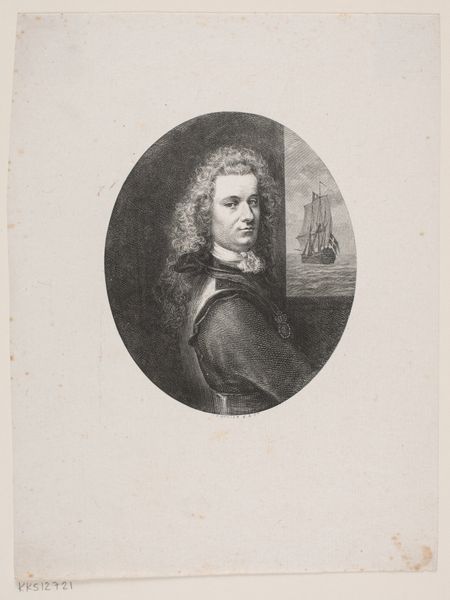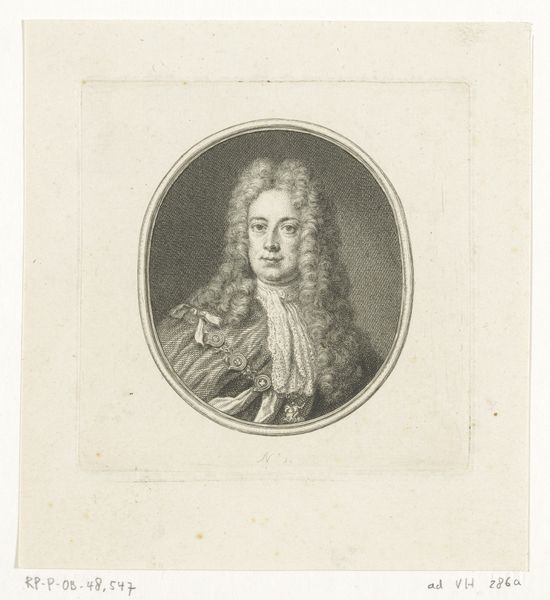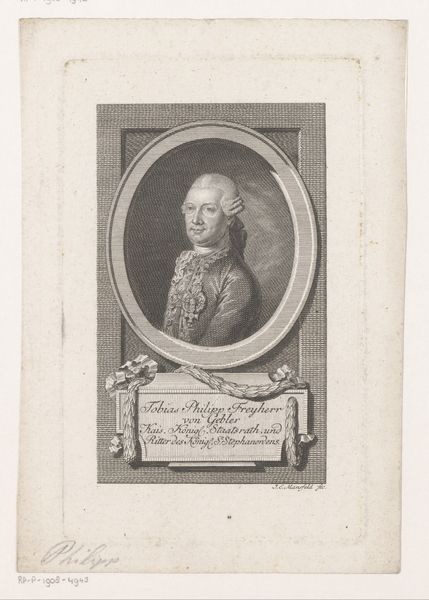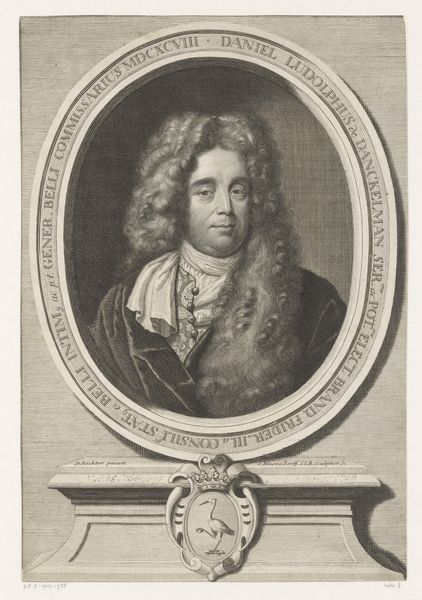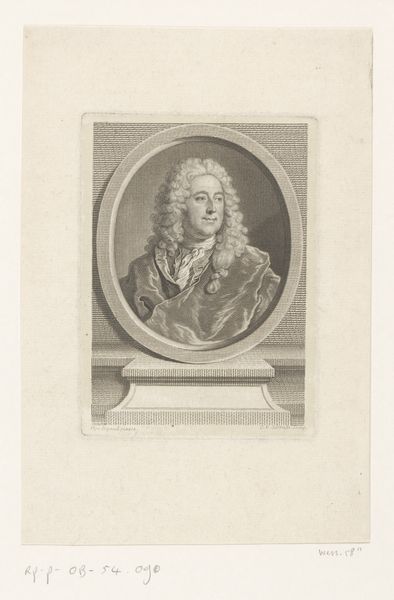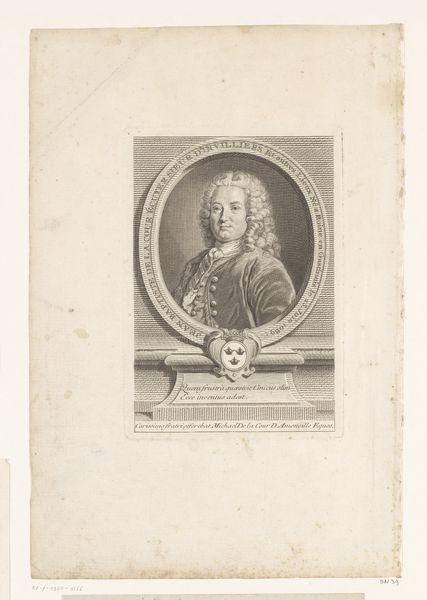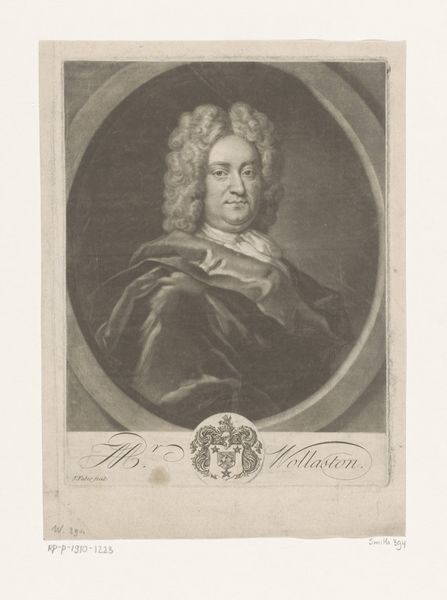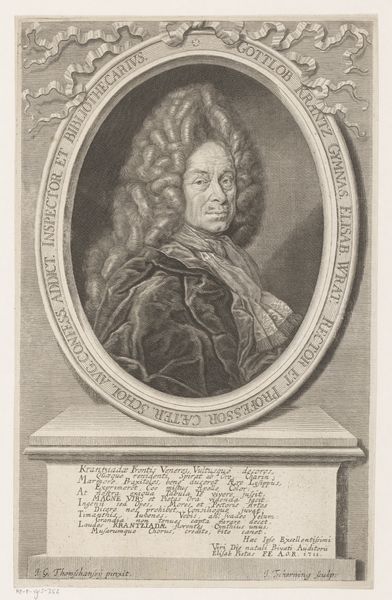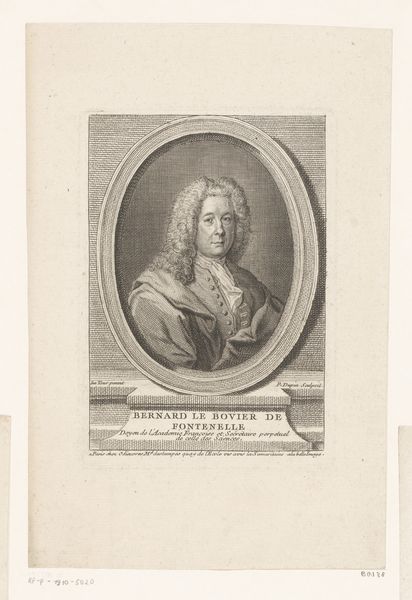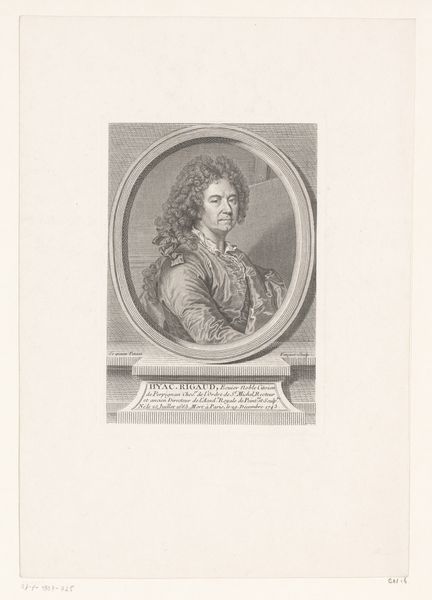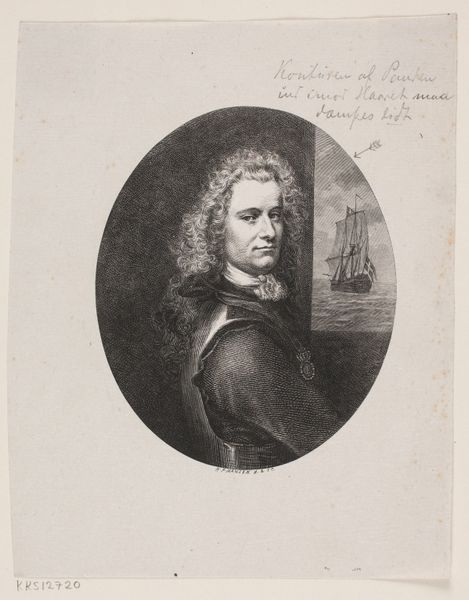
Dimensions: height 166 mm, width 107 mm
Copyright: Rijks Museum: Open Domain
Curator: Let’s discuss this remarkable engraving, "Portret van Filips II, hertog van Orleans," likely produced between 1776 and 1824. What strikes you first about its composition? Editor: It's the overwhelming sense of detail achieved through delicate lines. The textures in the wig and the metallic sheen of the armor—they all contribute to an impressive visual complexity within this limited tonal range. Curator: Absolutely. The production of prints like this one depended heavily on skilled craftsmanship. Engravers had to meticulously transfer images onto metal plates, often working for hours under demanding conditions. Editor: Focusing on the internal visual relationships, notice the framing. The oval border contains and concentrates the sitter's persona. And that slight upward gaze and pursed lips – signals of controlled authority. It embodies classic Baroque portraiture. Curator: Exactly. Consider the social context. This portrait served not just as an aesthetic object, but also as a form of social currency. The copies circulating perpetuated the image and therefore the power of its subject. Editor: Power communicated through very calculated formal decisions, from the curve of each hair to the carefully modulated shading that lends his face dimension. Look closely; these minute modulations capture the light and describe form in the Baroque aesthetic. Curator: Furthermore, think about the accessibility of this form. While the original painting, should there be one, was available only to a select few, the print democratized the image of the Duke of Orleans. Editor: True, however, the engraving arguably loses the visceral experience afforded by the original painting's colors and dimensions; yet we gain, instead, a sophisticated refinement intrinsic to the linear form. It brings to bear a very different aesthetic experience. Curator: Precisely. In analyzing prints like these, we're invited to consider not just artistic skill but also networks of patronage and consumption that underpin cultural production. Editor: This deep dive really reinforces my appreciation for its balanced tension between intricate detail and carefully managed authority; both structural and expressive elements are thoughtfully intertwined here. Curator: Indeed, examining this print in terms of both its production and the circulation allows for us to engage with broader historical forces at work during its time.
Comments
No comments
Be the first to comment and join the conversation on the ultimate creative platform.
